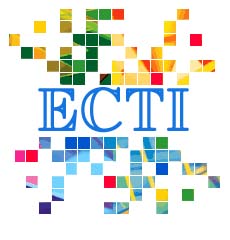Facial Expression Recognition from 2.5D Partial Face Data by Using Face Plane
Main Article Content
Abstract
Due to a problem of current research occurring when recognizing facial expressions from a 2.5D partial face data set taken from any viewpoint ranging from -45 to +45
, we propose a novel algorithm for recognizing facial expressions from a 2.5D partial face data set. A 2.5D partial data set is captured from any viewpoint between -45
and +45
. For facial expression recognition, a 3D virtual expression face is first reconstructed from a 2.5D partial face data set. A facial expression is then represented in terms of the change of crossing points on a face plane. Next, two schemes are used to analyse the crossing points for recognition. In the ¯rst scheme, the distribution of crossing points was used. In the second scheme, the displacement vectors of crossing points by facial expression change were used. The classi¯cation is carried out by using a support vector machine (SVM) for the both recognition schemes. The experiments were done for four facial expressions (neutral, anger, surprise and smiling) of 22 persons. The results showed the feasibility of the proposed method.
Article Details
This journal provides immediate open access to its content on the principle that making research freely available to the public supports a greater global exchange of knowledge.
- Creative Commons Copyright License
The journal allows readers to download and share all published articles as long as they properly cite such articles; however, they cannot change them or use them commercially. This is classified as CC BY-NC-ND for the creative commons license.
- Retention of Copyright and Publishing Rights
The journal allows the authors of the published articles to hold copyrights and publishing rights without restrictions.
References
[2] B. Fasel, and J. Luettin, "Automatic Facial Expression Analysis: A Survey," Pattern Recognition, 36(1):259-275, 2003.
[3] X. Lu, A.K. Jain and D. Colbry, "Matching 2.5D Face Scans to 3D Models," IEEE Trans. on Pattern Anal. Mach. Intell.; 28(1), pp. 31-43 (2006).
[4] M. Pantic, and L.J.M. Rothkrantz, "Expert System for Automatic Analysis of Facial Expression," Image and Vision Computing Journal, 18(11):881-995, 2000.
[5] H. Micheal, A. Wiratanaya and K.F. Kraiss, "Facial Expression Modeling from Still Images using a Single Generic 3D Head Model," Proceeding of the 28th DAGM Symposium, Berling, pp. 324-333, September, 2006.
[6] I.A. Essa, A.P. Pentland, "Coding, Analysis, Interpretation, and Recognition of Facial Expressions," IEEE Trans. Pattern Analysis and Machine Intelligence, Vol. 19, No. 7. pp. 757-763, July, 1997.
[7] Li and A. Barreto, "An Integrated 3D Face Expression Recognition Approach," Proceeding of ICASSP2006, pp. 1132-1135, Toulouse, 2006.
[8] J. Wang, L. Yin, X. Wei and Y. Sun, "3D Facial Expression Recognition Based on Primitive Surface Feature Distribution," Proceeding of CVPR'06, New York, pp. 1399-1406, October, 2006.
[9] Th. Charoenpong, T. Shogo and H. Hase, "3D Face Reconstruction by 2.5D Partial Face Data," The Journal of the IIEEJ, Vol. 37, No. 4, pp. 476-485, 2008.
[10] R. Halir, and J. Flusser, "Numerically Stable Direct Least Squares Fitting of Ellipses," In Skala, V (ed) Proc. of Int. Conf. in Central Europe on Computer Graphics, Visualization and Interactive Digital Media, pp. 125-132, 1998.
[11] M. Benz, X. Laboureux, T. Maier, et al, "The Symmetry of Faces," Proc. of VMV'2002, Erlangen, Germany, pp. 43-50, 2002.
[12] H. Hase, M. Yoneda, T. Kasamatsu and J. Kato, "A Proposal for a Face Plane," Proceeding of the 7th International Conference on Image Processing, pp. 333-336, Greece, 2001.
[13] C.-C. Chang and C.-J. Lin, "LIBSVM: a library for support vector machines". http://www.csie.ntu.edu.tw/ cjlin/libsvm.
[14] Nelder, J. A. and Mead, R. "A Simplex Method for Function Minimization." Computer Journal. 7, 308-313, 1965.
[15] Y. Lijun, W. Xiaozhou, S. Yi, W. Jun, J.R. Matthew, "A 3D Facial Expression Database For Facial Behavior Research," 7th Int. Conf. on Automatic Face and Gesture Recognition (FGR06), pp. 211 - 216, 2006.

